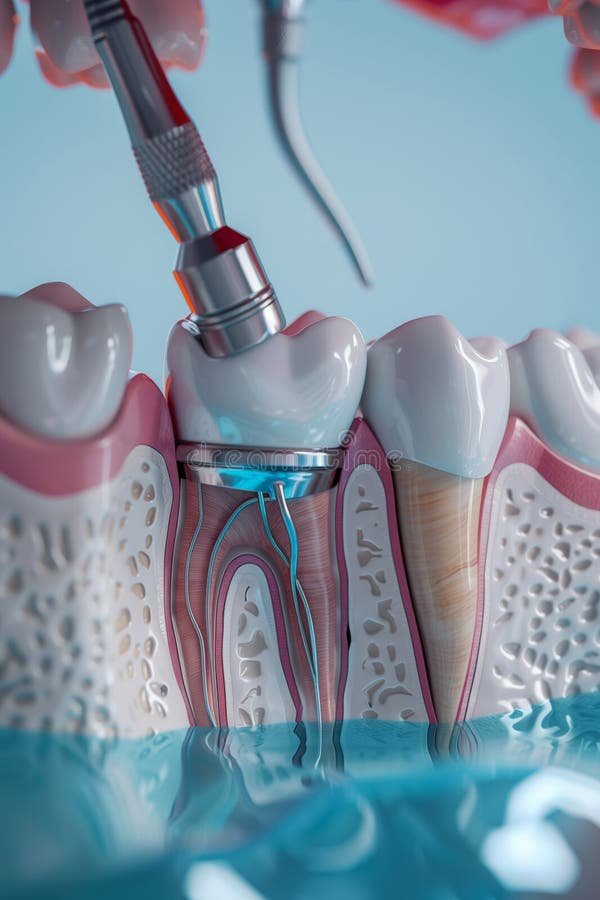When faced with a severe tooth infection or damage, many people worry about the need for tooth extraction. However, root canal treatment offers a solution that can save your tooth, prevent further complications, and restore its functionality. This procedure is one of the most effective ways to treat infected or injured teeth, making it an essential part of modern dental care. In this guide, we’ll explore how root canal treatment works, its benefits, and what you can expect during the recovery process.
What Is Root Canal Treatment?
Root canal treatment in dubai (علاج قناة الجذر في دبي) is a dental procedure used to save a tooth that has been severely damaged or infected. Inside each tooth, beneath the hard outer enamel, lies the pulp, which contains nerves, blood vessels, and connective tissue. When this pulp becomes infected due to deep decay or trauma, it can lead to significant pain and swelling. If left untreated, the infection can spread, resulting in tooth loss.
During a root canal procedure, the infected pulp is removed, and the space is cleaned and sealed to prevent further infection. A crown or filling is typically placed on the tooth to restore its strength and function.
Why Do You Need Root Canal Treatment?
Root canal treatment becomes necessary when the pulp of a tooth becomes inflamed or infected. The infection can be caused by a variety of factors, including:
- Deep Tooth Decay: When cavities are left untreated, they can reach the pulp, allowing bacteria to infect the tooth.
- Cracked or Chipped Teeth: A fracture can expose the pulp, allowing bacteria to enter.
- Repeated Dental Procedures: Frequent fillings or other dental work can irritate the pulp and lead to infection.
- Trauma: A blow to the tooth, even without visible cracks, can damage the pulp.
If left untreated, the infection can spread to the surrounding tissues and bones, which can lead to serious complications, including abscesses or tooth loss. Root canal treatment offers a way to save the tooth, preventing the need for extraction.
How Does the Root Canal Procedure Work?
While the thought of a root canal might sound intimidating, it is a common and relatively straightforward procedure. Here’s a step-by-step breakdown of what typically happens during a root canal:
Initial Assessment:
The process begins with an examination of the tooth and a series of X-rays to determine the extent of the damage or infection. This helps the dentist assess whether root canal treatment is the best course of action.
Numbing the Area:
The area around the infected tooth is numbed using a local anesthetic to ensure you are comfortable and pain-free during the procedure. If you have anxiety about dental work, sedation options may be available to help you relax.
Accessing the Pulp:
Once the area is numb, the dentist makes a small opening in the crown of the tooth to access the pulp chamber. The infected or damaged pulp is carefully removed using specialized instruments.
Cleaning and Shaping the Root Canals:
After removing the pulp, the empty space inside the tooth is cleaned and shaped to remove any remaining bacteria or tissue. This step is essential to ensure the area is thoroughly disinfected before it is sealed.
Filling and Sealing the Tooth:
Once the root canals are cleaned and shaped, they are filled with a biocompatible material, usually gutta-percha. This material seals the canals and prevents further infection. A temporary filling is placed to protect the tooth.
Permanent Restoration:
After the tooth has healed, a permanent filling or crown is placed to restore the tooth’s strength and appearance. The crown protects the tooth from further damage and helps it function like a natural tooth.
Benefits of Root Canal Treatment:
Root canal treatment offers several significant benefits, making it a highly recommended solution for treating infected or damaged teeth:
Preserves the Natural Tooth:
The most obvious benefit of root canal treatment is that it allows you to keep your natural tooth. Preserving a natural tooth helps maintain your bite and chewing function, contributing to better overall oral health.
Relieves Pain and Discomfort:
Root canal treatment is performed to alleviate pain caused by an infected tooth. Once the infection is removed, most patients experience immediate relief from the pain and swelling associated with the infection.
Prevents Tooth Loss:
By addressing the infection early on, root canal treatment helps avoid the need for tooth extraction. Losing a tooth can lead to a variety of complications, such as difficulty chewing, shifting of surrounding teeth, and bone loss in the jaw. Root canal treatment prevents these issues by saving the tooth.
Long-Term Durability:
With proper care, a tooth that has undergone a root canal can last for many years, sometimes even a lifetime. When followed by a permanent restoration, such as a crown, the tooth can function just like any other tooth in your mouth.
Restores Your Smile:
Root canal treatment allows you to maintain your natural smile, as the procedure eliminates the infection without removing the tooth. Once the tooth is restored with a crown, it will blend seamlessly with your other teeth, improving your appearance.
Aftercare for Root Canal Treatment:
Proper aftercare is essential to ensure that the root canal treatment is successful and that your tooth heals properly. Here’s what you need to know about post-treatment care:
Pain Relief:
After the procedure, some mild discomfort or swelling is normal. Over-the-counter pain relievers, such as ibuprofen or acetaminophen, can help manage the pain. If pain persists or worsens after a few days, contact your dentist for further evaluation.
Avoid Eating on the Treated Tooth:
Until the permanent restoration is placed, avoid chewing on the treated tooth to prevent damage to the temporary filling or further discomfort.
Maintain Good Oral Hygiene:
Continue brushing and flossing regularly, but be gentle around the treated tooth. Proper oral hygiene helps prevent further infection and ensures the longevity of your root canal.
Regular Checkups:
Follow-up visits are important to monitor the healing process and ensure that the tooth is functioning well. Your dentist will check that the root canal is fully sealed and that the tooth is not experiencing any further complications.
Watch for Complications:
In rare cases, complications such as reinfection may occur. If you notice any unusual symptoms, such as increased pain, swelling, or a bump on the gums, contact your dentist as soon as possible.
Conclusion:
Root canal treatment is a reliable and effective way to save an infected or damaged tooth, offering numerous benefits for those seeking to preserve their natural teeth. The procedure not only alleviates pain but also helps prevent tooth loss and long-term oral health issues. With proper aftercare and regular checkups, a root canal-treated tooth can last for years, ensuring that your smile stays healthy and intact.
If you’re experiencing tooth pain or suspect an infection, don’t delay seeking treatment. Root canal treatment can offer a solution that saves your tooth and restores your oral health, so you can smile confidently again.
















Leave a Reply